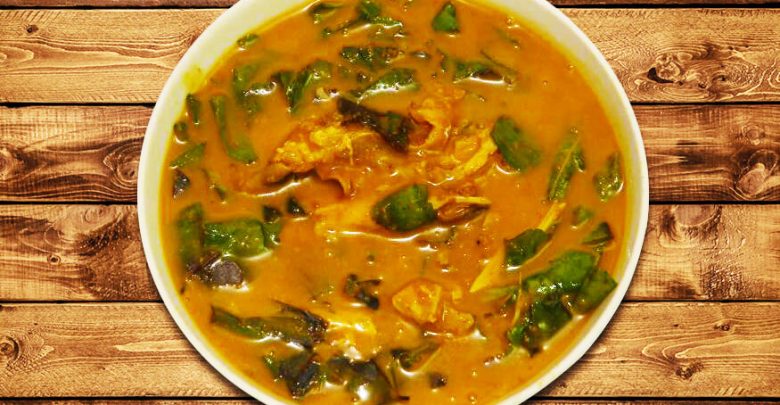Nigerian Food
How to Cook Oha Soup with Cocoyam
How to Cook Oha Soup
Contents
History of Oha Soup
Oha soup is a meal top-rated in the eastern parts of Nigeria. It is often referred to as Ora. There is nothing unique with the soup because the necessary soup texture can be made to go with other leaves; the only distinct nature of the soup is the leaves used. Oha leaves are seasonal and are obtained from the tree called African Rosewood (Pterocarpus Mildbraedii).
Oha leaves, unlike the other vegetables, cannot be cut with knives or sharp objects because it will make the soup quite bitter. The best way, however, is shredding with your hands slightly. Also, the leaves turn bitter when stored in places with excess heat. To preserve Oha leaves, the best method is to wrap them gently in old newspapers and loosely seal them with a polythene bag. Refrigeration is not an option because the excess moisture can make the leaves turn black and lose their taste. Oha leaves on their own are quite expensive due to their seasonal nature. When purchasing Oha leaves, check to see if they are tender and light green. If you are offered a bunch with thick leaves that are really dark, do not buy them because they are mature and have lost their flavor.
Moving on, we will talk about the best methods of cooking Oha soup.
Some parts of eastern Nigeria believe that Oha soup is best eaten with a thickened mixture, while some can prepare the famous Egusi soup and use Oha leaves to garnish it. Whatever style you choose is excellent; it will all turn out well if you cook right. Oha soup can be prepared in a number of forms.
For now, let’s talk about Oha with Cocoyam
Ingredients:
- Handful Uziza Leaves or 1 Teaspoon of ground Uziza seeds
- 4 Medium size Cocoyam (Ede)
- Smoked Fish
- Stockfish, the head especially (Okporoko)
- 4 Tablespoons of Ground Crayfish
- 1 Tablespoon of Ogiri Igbo
- 2 spoons of Cameroon pepper
- 2 Maggi Cubes (Crayfish Flavor)
- 3 Tablespoons of Salt
- 2 Kg of Assorted meats (Beef, goat meat, Ponmo, Shaki are ideal)
- 2 Cooking Spoons of Palm oil
- 1 Bunch of Oha leaves
Preparation:
You will start by washing your beef and seasoning it with salt and Maggi. Do not add water; leave it to boil. The water from the meat will seep out and cook the meat. Doing it this way will ensure that the seasoning flavor will be tasted when eating the meat. While the beef and goat meat is boiling, use hot water to wash the stock fish and smoked fish. Wash properly and separate the entrails because you wouldn’t want to get the taste of bile while eating. Rinse in cold water and add the fish to the pot where the meat is already boiling. This will be the best time to add the water needed to make the soup. When adding water, let it be 6 inches above the stock (a combination of meat and fish for soup). This will give you enough moisture even after the cocoyam has been added and also prevent the cocoyam from burning.
While the meat and the fish are boiling, get another pot, wash your cocoyam and leave to cook in water for 20 minutes. Once it is soft, pound until it has a slightly sticky consistency, like a sticky puree; if you do not have this result, your soup will be filled with lumps. Some people add a little oil to their cocoyam while pounding to give it color. It is optional.
Check your pot of stock. If it is already boiling all around, add the two spoons of red oil and the two spoons of pepper. Leave to simmer for another two minutes, then add the cocoyam puree. Leave to boil for another 6-8 minutes. The soup would have a creamy feel and texture, and the cocoyam puree would have melted completely, blending correctly with the oil. The color this time will be a bright yellow color. Add the already washed Uziza leaves or ground seed (depending on your choice), Ogiri Igbo, Maggi cube and crayfish. Leave to simmer for two minutes. Then add the already washed and shredded Oha leaves. Turn off your fire, and let the steam cook the leaves. If you put the Oha leaves when the pot is still on the fire and leave it to cook for long, the leaves will turn black and taste bitter. It is very tender and sensitive to excess heat.
Your Oha soup is ready to eat. Depending on what you want, you could take it with either Eba, Fufu, or Semovita.


I will try this. Thanks